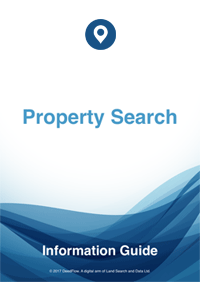How Do I Get a New Deed for My House?
Contents
Overview
Every time a property is purchased the Land Registry create a new set of ownership documents. If the property was previously unregistered the ownership documents will be created by copying details from your old Associated Documents; if it was already registered a replacement set of ownership documents is created.
Subsisting Entries
The ownership documents are the Title Register and Title Plan. They contain subsisting entries and not historic entries, so for example, where A sells to B, when the new Title Register is created the Land Registry remove A’s details and replace them with B’s details. Likewise with mortgages. When a mortgage is redeemed it is removed from the Register completely.
This is what happens When You have Completed Your Purchase
Where the lost deeds are found not to be registered then you should:
- The estate agents release the property keys to you and you can now move in.
- Your solicitors send the relevant documents to the Land Registry.
- The Land Registry record the receipt of your documents in their Day List.
- Your documents are queued awaiting registration.
- When your registration is complete you will receive a letter from the Land Registry to tell you.
How to Obtain a Copy of Your New House Deeds
Your new House Deeds, or Title Register and Title Plan, as they are correctly termed, are your ownership documents and are official evidence of your ownership. They contain your contact details, the property address and description, details of your mortgage and other matters such as the tenure, restrictive covenants and easements.
You have to apply for, and pay for, your own set of documents. They can be obtained at any time online, for payment of a small fee. You can obtain copies from ourselves by selecting the Title Register button below.
Do You Need to Obtain a Copy of Your New House Deeds?
It is not essential that you do so, but it would certainly be wise to obtain a copy. This is because the Land Registry do sometimes make mistakes, and it is a simple matter for you to obtain a copy and check. Simple mistakes can be amended quickly. Most public authorities use the Land Registry to check the validity of a person’s ownership or identify. It is therefore of paramount importance that your ownership details are correctly shown.
In particular you should check:
- That the property address listed in Section A of the Title Register is correct, including the post code.
- That the spelling of your name in Section B is correct. All of your Christian names should be shown and the spellings should be correct.
- That your contact details are correct. You should consider whether to expand your contact address by adding an email address or another address where you also spend time. If the Land Registry need to contact you, e.g. in the case of a suspected fraudulent application submitted by someone else, they will contact you at all of these addresses, which will increase the likelihood of your seeing their message.
Title Register
The Land Registry Title Register holds data relating to the property ownership, purchase price, mortgage, tenure, covenants, rights of way, leases and class of title.
£19.95Title Plan
The Title Plan shows an outline of the property and its immediate neighbourhood, and uses colours to identify rights of way, general boundaries and land affected by covenants.
£19.95Associated Documents
Deeds creating Restrictions, Covenants, Easements, etc. are often kept digitally by the Land Registry and made available for sale due to their invaluable detail and content to assist in further understanding the Restrictions, etc.
£29.95


